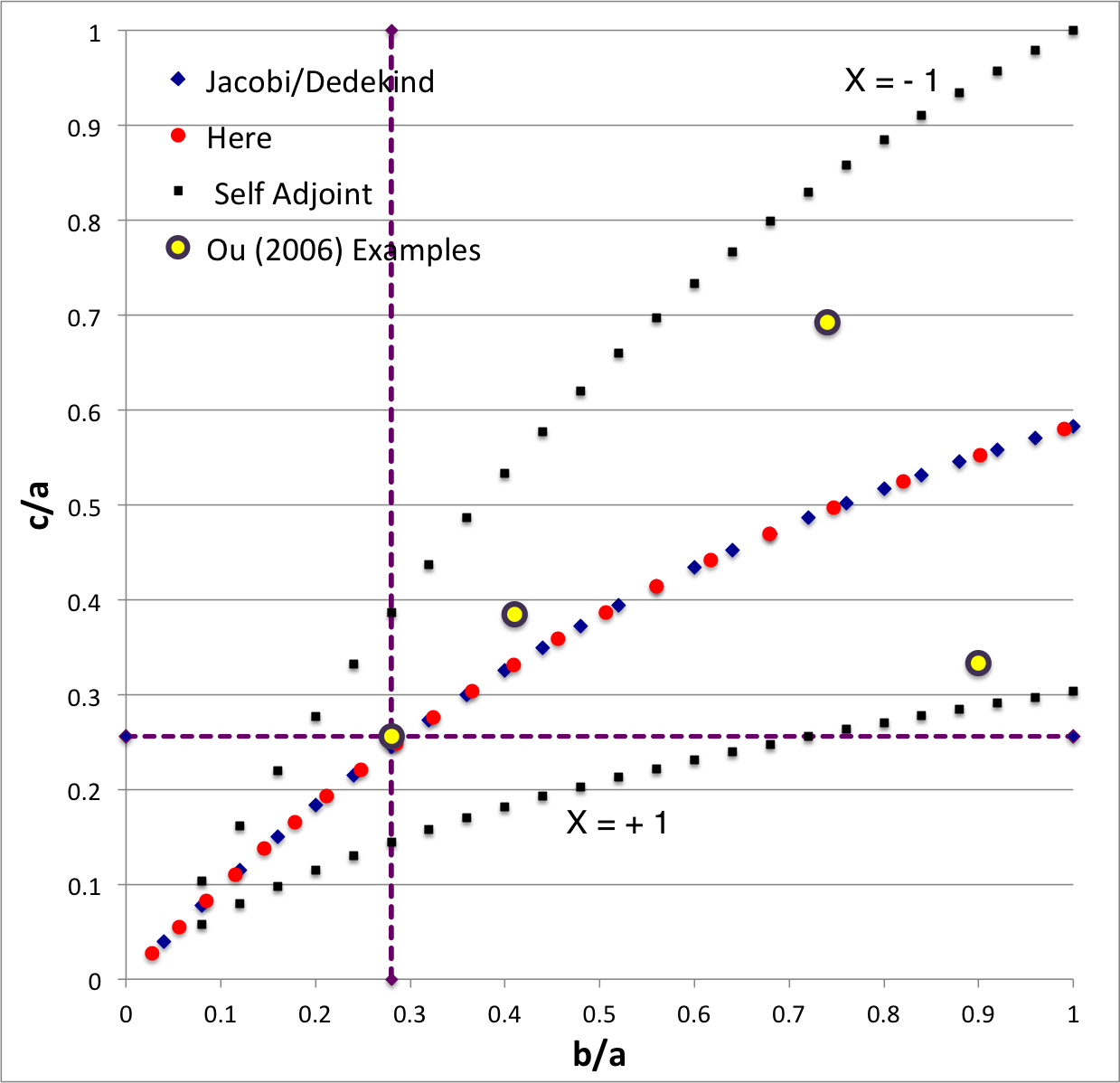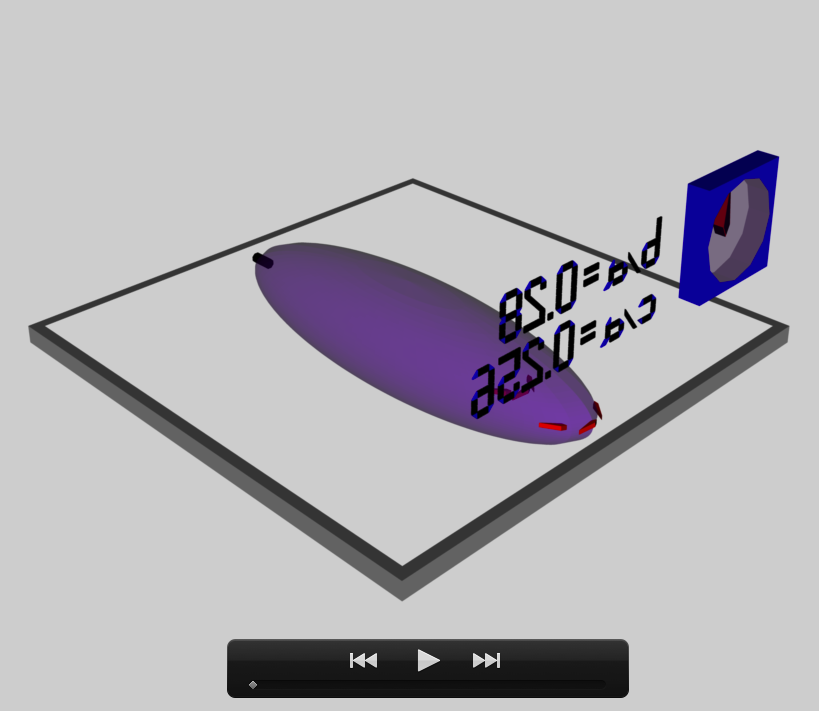Difference between revisions of "User:Tohline/Appendix/Ramblings/RiemannB28C256"
| (12 intermediate revisions by the same user not shown) | |||
| Line 13: | Line 13: | ||
<tr> | <tr> | ||
<td align="center" rowspan=" | <td align="center" rowspan="6"> | ||
<b>Figure 1a</b><br /> | <b>Figure 1a</b><br /> <br /> | ||
[[File: | [[File:B28c256EFEdiagram02.png|325px|EFE Parameter Space]] | ||
</td> | </td> | ||
<td align="center" rowspan=" | <td align="center" rowspan="6" width="2%"> | ||
| | ||
</td> | </td> | ||
| Line 23: | Line 23: | ||
<math>~\frac{b}{a} = 0.28</math> | <math>~\frac{b}{a} = 0.28</math> | ||
</td> | </td> | ||
<td align="center" rowspan=" | <td align="center" rowspan="6" width="2%"> | ||
| | ||
</td> | </td> | ||
<td align="center" rowspan=" | <td align="center" rowspan="6" bgcolor="lightgrey"> | ||
<b>Figure 1b</b><br /> | <b>Figure 1b</b><br /> | ||
[[File:COLLADAb28c256OldModel.png|300px|EFE Model b28c256]] | [[File:COLLADAb28c256OldModel.png|300px|EFE Model b28c256]] | ||
| Line 42: | Line 42: | ||
''Direct'' | ''Direct'' | ||
</td> | </td> | ||
<td align="center" width="2%" rowspan=" | <td align="center" width="2%" rowspan="4"> | ||
| | ||
</td> | </td> | ||
| Line 65: | Line 65: | ||
<td align="center"> | <td align="center"> | ||
<math>~\lambda_\mathrm{EFE} = - 0.456676</math> | <math>~\lambda_\mathrm{EFE} = - 0.456676</math> | ||
</td> | |||
</tr> | |||
<tr> | |||
<td align="center"> | |||
<math>~f = - 0.174510</math> | |||
</td> | |||
<td align="center"> | |||
<math>~f = - 85.0007</math> | |||
</td> | </td> | ||
</tr> | </tr> | ||
</table> | </table> | ||
The subscript "EFE" on Ω and λ means that the relevant frequency is given in units that have been adopted in [<b>[[User:Tohline/Appendix/References#EFE|<font color="red">EFE</font>]]</b>], that is, in units of <math>~[\pi G\rho]^{1 / 2}</math>. In Figure 1a, the | The subscript "EFE" on Ω and λ means that the relevant frequency is given in units that have been adopted in [<b>[[User:Tohline/Appendix/References#EFE|<font color="red">EFE</font>]]</b>], that is, in units of <math>~[\pi G\rho]^{1 / 2}</math>. In Figure 1a, the yellow circular marker, that has been placed where the pair of purple dashed lines cross, identifies the location of this model in the "c/a versus b/a" ''[[User:Tohline/ThreeDimensionalConfigurations/RiemannStype#Fig2|EFE Diagram]]'' that appears as Figure 2 on p. 902 of [http://adsabs.harvard.edu/abs/1965ApJ...142..890C S. Chandrasekhar (1965)]; essentially the same diagram appears in §49 (p. 147) of [<b>[[User:Tohline/Appendix/References#EFE|<font color="red">EFE</font>]]</b>]. | ||
==Coding Steps== | ==Coding Steps== | ||
| Line 83: | Line 92: | ||
</ul> | </ul> | ||
<li><font color="darkgreen"><b>Pencil90.dae</b></font> | <li><font color="darkgreen"><b>Pencil90.dae</b></font> | ||
<br />Identical to <b>FastRot79.dae</b> except wall-mounted labeling has been changed to reflect new values of b/a and c/a. | <br />Identical to <b>FastRot79.dae</b> except wall-mounted labeling has been changed to reflect new values of b/a and c/a. <font color="red">This works in both visualization venues</font>. | ||
</li> | </li> | ||
</ | <li><font color="darkgreen"><b>Pencil91.dae</b></font> | ||
<br />Inserted correct surface geometry of this rapidly rotating Riemann ellipsoid. <font color="red">This works in both visualization venues</font>. | |||
</li> | |||
< | <li><font color="darkgreen"><b>Pencil92.dae</b></font> | ||
<li><font color="darkgreen"><b> | <br />Inserted the correct ''animated'' depiction of the 9 Lagrangian fluid elements. | ||
<br />Inserted correct | </li> | ||
<li><font color="darkgreen"><b>Pencil93.dae</b></font> | |||
<br />Placed 51 yellow, equatorial-plane markers. <font color="red">This works in both visualization venues</font> | |||
</li> | </li> | ||
<li><font color="darkgreen"><b> | <li><font color="darkgreen"><b>Pencil94.dae</b></font> | ||
<br /> | <br />Finished specifying correct behavior of clock, which gives the final, fully functional model. <font color="red">This works in both visualization venues</font> | ||
</li> | </li> | ||
<li><font color="darkgreen"><b> | <li><font color="darkgreen"><b>PencilInertial95.dae</b></font> | ||
<br /> | <br />Flipped from rotating- to inertial-frame of reference. <font color="red">This works in both visualization venues</font> | ||
</li> | </li> | ||
<li><font color="darkgreen"><b> | <li><font color="darkgreen"><b>PencilInertial96.dae</b></font> | ||
<br /> | <br />Enlarged red "Lagrange01" marker from 0.03 to 0.075; and changed transparency of ellipsoid surface to (totally opaque) 1.0. <font color="red">This works in both visualization venues</font> | ||
</li> | </li> | ||
</ul> | </ul> | ||
===Best b28c256 Models=== | ===Best b28c256 Models=== | ||
| Line 107: | Line 119: | ||
The example models created for display in the Oculus Rift S are the following: | The example models created for display in the Oculus Rift S are the following: | ||
<ol> | <ol> | ||
<li>Inertial Frame: <font color="lightgreen">[KEEP]</font> </li> | <li>Inertial Frame: <font color="lightgreen">[KEEP]</font> PencilInertial96.dae [04 June 2020] </li> | ||
<li>Rotating Frame: <font color="lightgreen">[KEEP]</font> | <li>Rotating Frame: <font color="lightgreen">[KEEP]</font> Pencil94.dae [04 June 2020] </li> | ||
</ol> | </ol> | ||
| Line 143: | Line 155: | ||
* Discussion of [[User:Tohline/ThreeDimensionalConfigurations/RiemannStype|Ou's Riemann-Like Ellipsoids]] | * Discussion of [[User:Tohline/ThreeDimensionalConfigurations/RiemannStype|Ou's Riemann-Like Ellipsoids]] | ||
* [[User:Tohline/ThreeDimensionalConfigurations/MeetsCOLLADAandOculusRiftS|Riemann Meets COLLADA & Oculus Rift S]] | * [[User:Tohline/ThreeDimensionalConfigurations/MeetsCOLLADAandOculusRiftS|Riemann Meets COLLADA & Oculus Rift S]]: Example <b>(b/a, c/a) = (0.41, 0.385)</b> | ||
** [[User:Tohline/Appendix/Ramblings/VirtualReality#Virtual_Reality_and_3D_Printing|Virtual Reality and 3D Printing]] | ** [[User:Tohline/Appendix/Ramblings/VirtualReality#Virtual_Reality_and_3D_Printing|Virtual Reality and 3D Printing]] | ||
** [[User:Tohline/Appendix/Ramblings/OculusRift_S|Success Importing Animated Scene into Oculus Rift S]] | ** [[User:Tohline/Appendix/Ramblings/OculusRift_S|Success Importing Animated Scene into Oculus Rift S]] | ||
** [[User:Tohline/Appendix/Ramblings/RiemannMeetsOculus|Carefully (Re)Build Riemann Type S Ellipsoids Inside Oculus Rift Environment]] | ** [[User:Tohline/Appendix/Ramblings/RiemannMeetsOculus|Carefully (Re)Build Riemann Type S Ellipsoids Inside Oculus Rift Environment]] | ||
** Other Example S-type Riemann Ellipsoids: | ** Other Example S-type Riemann Ellipsoids: | ||
*** <b>[[User:Tohline/Appendix/Ramblings/RiemannB90C333|(b/a, c/a) = (0.90, 0.333)]]</b> | *** <b>[[User:Tohline/Appendix/Ramblings/RiemannB90C333|(b/a, c/a) = (0.90, 0.333)]]</b> | ||
Latest revision as of 03:58, 14 June 2020
Another S-type Example b28c256
This chapter is an extension of the chapter we have titled, "Riemann Meets COLLADA & Oculus Rift S." In that chapter we used as our first example of a Riemann S-type ellipsoid the model with parameters, (b/a, c/a) = (0.41, 0.385). Here we construct a model with parameters, (b/a, c/a) = (0.28, 0.256). Other closely related chapters are listed below under the heading, "See Also".

|
|---|
| | Tiled Menu | Tables of Content | Banner Video | Tohline Home Page | |
Key Physical Parameters
The model that we have chosen to use in our second successful construction of a COLLADA-based, 3D and interactive animation has the following properties; this model has been selected from Table 2 of our accompanying discussion of Riemann S-type ellipsoids:
|
|
<math>~\frac{b}{a} = 0.28</math> |
|
||||
|
<math>~\frac{c}{a} = 0.256</math> |
||||||
|
Direct |
|
Adjoint |
||||
|
<math>~\Omega_\mathrm{EFE} = 0.456676</math> |
<math>~\Omega_\mathrm{EFE} = - 0.020692</math> |
|||||
|
<math>~\lambda_\mathrm{EFE} = 0.020692</math> |
<math>~\lambda_\mathrm{EFE} = - 0.456676</math> |
|||||
|
<math>~f = - 0.174510</math> |
<math>~f = - 85.0007</math> |
|||||
The subscript "EFE" on Ω and λ means that the relevant frequency is given in units that have been adopted in [EFE], that is, in units of <math>~[\pi G\rho]^{1 / 2}</math>. In Figure 1a, the yellow circular marker, that has been placed where the pair of purple dashed lines cross, identifies the location of this model in the "c/a versus b/a" EFE Diagram that appears as Figure 2 on p. 902 of S. Chandrasekhar (1965); essentially the same diagram appears in §49 (p. 147) of [EFE].
Coding Steps
Part A
Here we begin with a working model of b90c333 and use incremental changes in the COLLADA-based code to construct a working model of b28c256.
- This pair of starting models has been copied from the successful modeling of Riemann S-type ellipsoids that have (b/a, c/a) = (0.90, 0.333)
- Inertial Frame: [KEEP] FastInertial80.dae [04 June 2020]
- Rotating Frame: [KEEP] FastRot79.dae [04 June 2020]
- Pencil90.dae
Identical to FastRot79.dae except wall-mounted labeling has been changed to reflect new values of b/a and c/a. This works in both visualization venues. - Pencil91.dae
Inserted correct surface geometry of this rapidly rotating Riemann ellipsoid. This works in both visualization venues. - Pencil92.dae
Inserted the correct animated depiction of the 9 Lagrangian fluid elements. - Pencil93.dae
Placed 51 yellow, equatorial-plane markers. This works in both visualization venues - Pencil94.dae
Finished specifying correct behavior of clock, which gives the final, fully functional model. This works in both visualization venues - PencilInertial95.dae
Flipped from rotating- to inertial-frame of reference. This works in both visualization venues - PencilInertial96.dae
Enlarged red "Lagrange01" marker from 0.03 to 0.075; and changed transparency of ellipsoid surface to (totally opaque) 1.0. This works in both visualization venues
Best b28c256 Models
The example models created for display in the Oculus Rift S are the following:
- Inertial Frame: [KEEP] PencilInertial96.dae [04 June 2020]
- Rotating Frame: [KEEP] Pencil94.dae [04 June 2020]
COLLADA Model Files
Direct Configurations
b28c256DI.dae [Direct Inertial Frame] … a COLLADA code containing nnnn lines of <xml>-formatted ASCII text
Original filename used above: xxx.dae
<?xml version="1.0" encoding="UTF-8" standalone="no" ?>
b28c256DRot.dae [Direct Rotating Frame] … a COLLADA code containing nnnn lines of <xml>-formatted ASCII text
Original filename used above: xxx.dae
<?xml version="1.0" encoding="UTF-8" standalone="no" ?>
See Also
- Discussion of Ou's Riemann-Like Ellipsoids
- Riemann Meets COLLADA & Oculus Rift S: Example (b/a, c/a) = (0.41, 0.385)

|
|---|
|
© 2014 - 2021 by Joel E. Tohline |

